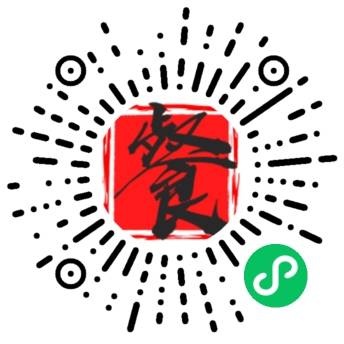▲Follow us and “Sticky On Top”
Preface
Marking Awards, as aglobal food & beverage packaging design award, is a global initiative first launched by Food & Beverage Innovation Forum (FBIF) in 2016 in Shanghai. Its22resident juries, half are senior executives of packaging design departments from global top 100 F&B companies, such as PepsiCo, Nestlé, Mars and Wrigley, and half are founders or creative directors from world-class design agencies, such as JKR, BETC, LPK, Mousegraphics, and Brandimage. They are committed to providing the most diversified interpretation and the most impartial judgment for the works entered. During the two years of Marking Awards’ holding, it has received attention from World Packaging Organization (WPO), served as a bridge between brands and design agencies forover 30times and contributed to cooperation foreight times, trying every means to promote interaction between food and design. Recently, FBIF has just officially announced to start Marking Awards 2019 and is ready to collect worldwide food &beverage packaging design works fromNov. 1, 2018 to Jan. 31, 2019. We are looking forward to WOWing for your work!
The power of design is endless, even though its objects are the extremely fast-moving, not-too-expensive food and beverage.
Seriously speaking, package and design are two different concepts. Although the former can generate many kinds of variations as time goes by, these variations are still somewhat different from design. In China, you can pack 500g sunflower seeds in a resealable stand up pouch, telling people they can zip it up if they can’t eat all at once. Or you can pack less seeds in a mini-packet, so as to offer an easy and convenient way of consuming. But what’s the difference with design? Apart from offering people packaging options of different specifications and functions, design also answers the question—why people should buy these branded sunflower seeds rather than the plastic resealable bag-packaged, bulk sunflower seeds an Uncle Lee hawks on streets.
For a long time, food and beverage industry has maintained a neither close nor far distance from packaging and/or design. With the pre-eminent trend of package upgrade at APAC area, we believe it is the time to thoroughly discussing the two key factors impeding further relationship building between the F&B brands and design.
Factor 1: The unpredictable design effect is less controllable than the heartening marketing.
In the F&B industry, marketing is compulsory while design optional. It makes sense from certain views. For example, in the fashion or furnishing industry, design shapes a product, and most often becomes the major selling point. Therefore, players in that industry contribute a lot to design. However, in the F&B sphere, the food or beverage itself is the No. 1 consumption object and the design effect is just too subtle or requires much more time to verify. Nevertheless, as marketing couldn’t directly constitute a selling point of food either, why brands are still more willing to invest in marketing rather than design?
This question, however, shall not be settled absolutely like the question “to be or not to be”. It is supposed to provoke brands into thinking seriously about resource allocation. It’s totally understandable that decision-makers prefer investing in sectors with direct ROI and evident gains, so we are used to see more budgets going to the marketing department and brands often delight in talking about different campaigns, cross-border cooperation, click rates and page views. While the effect of design is very subtle and reserved, it gradually becomes a once-for-all deal, that is, brands only think of design at special moments, such as launching new products, upgrading packages and brand image or cross-border marketing.
In the past, people just couldn’t measure the revenue or ROI brought about by these actions and no one had worked out any effective calculation method. However, on Oct. 25, 2018,McKinsey&Companyfirst published a report named“The Business Value of Design”. To write this report, they tracked the design practices of 300 publicly listed companies over a five-year period in industries of medical technology, consumer goods and retail banking in multiple countries, interviewed or surveyed their senior business and design leaders and finally, from more than two million pieces of financial data and more than 100, 000 design actions, McKinsey found thatcompanies with top-quartile McKinsey Design Index scores had 32 percentage points higher revenue growth and 56 percentage points higher total returns to shareholders (TRS) growth than their industry counterparts.
Only five years, all above substantial revenue growth and TRS growth have been achieved. Don’t you wanna reexamine the function of design?
Factor 2: The Imbalance between Art and Business
On Oct. 26, the award ceremony for Red Dot: Communication Design 2018 was held in Berlin, Germany, and soon FBIF first released its award-winning packaging design works in China. Apart from Red Dot, FBIF also follows closely behind the hot topics about other food packaging-related awards, such as Pentawards and Dieline, hoping to bring about new perspectives and timely information for industry professionals. However, as we learn more and deeper about these awards and related information, we find that for F&B brands who have just awakened their design consciousness,the biggest challenge is how to keep balance between the pursuit of art and business.
The imbalance between art and business is mainly manifested as the following two kinds:
a.Explicit imbalance. For example, a product with an extremely brilliant design has won various design awards but is poorly executed when brought to the market. Mediocre revenue performance is somewhat predictable. In contrast, a best-selling product may also have an unremarkable design. It is suggested that brands aiming for a long-lasting business should consider seriously leveraging the power of design to build entrant barriers and occupy consumers’ mind in advance and as long as possible.
b.Implicit imbalance. It often happens when a product gets world-known awards recognition for its packaging design, the design gets well implemented, and the visual effect of shelf display is also extraordinarily amazing. All is well done yet its market performance is just far less than expectations. This situation often makes brands feel at a loss, and even becomes the fuse leading people to doubt about the design and even the concerned international contests.
However, with the puzzling question of the implicit imbalance between brands’ pursuit towards art and business, it’s exactly the international contests such as Red Dot, IF, Pentawards, the Dieline and Marking Awards that help brands gradually untangle and clarify all the mess. After all, it’s not too difficult to figure out the reasons why a product has a poor commercial performance, considering there are many existing consumer research and big data analysis approaches.The real difficulty for brands lies in how to judge their quest for brand art, whether it’s suitable, targeted, and well-played.
For many times, brands expect to hear pertinent and constructive feedback on their designs (except hoping to be certified), so they try and fail continuously through different design contests. However, it is very challenging for brands to screen out a qualified third-party platform that perfectly fits their needs. In fact most of the F&B brands couldn’t distinguish the differences and advantages of world-class international contests, sometimes even design agencies feel puzzled about that too. Yet facing all the so-called well-known international/authoritative awards, it is definitely not recommended to enter every related ones. Instead, it is necessary for F&B brands to carefully evaluate if forward-looking industrial awards like Red Dot and IF is suitable for them to enter. Meanwhile, it’s also better to think about the preference of each packaging design contest, such as Pentawards, the Dieline and Marking Awards. Only if the focus points and functionality of these similar awards are studied can brands get the most benefits from participation.
When all comes to all, to hold Marking Awards, FBIF is not intended to have a finger in the contest pie. It’s just because the worldwide existing competitions couldn’t provide F&B brands with sufficient professional accreditation or design consultation.
Why? Let’s think about it in another way.In order to balance the design and business pursuit of a product, brands need advices from two groups of people most urgently: first, peers, i.e. other F&B brands who know exactly what they want or what confuse them; second, design world, specifically the world of packaging and brand design. When it comes to this, just look around and you’ll find that juries in many awards are not in the same sphere with the F&B industry but FBIF has already brought these two groups of people together:senior executives of visual/design departments from world top 100 F&B brands and design directors from world-renowned creative agencies. These people are constantly involved in the food industry, and with abundant experiences and diversified cultural backgrounds, they are sure to provide the most pertinent and constructive suggestion on how to balance art and business performance for F&B products.
Marking Awards is born for brands and believes how the F&B brands are designed shapes people’s future life. It is saying that the low-premium characteristic of food and beverage limits their package performance and design application. However, we couldn’t ignore the fact that with so much high consumption frequencies, food and beverage constitute too many details in our lives. Given this premise, what kind of F&B products do we want to consume in the future?
We welcome everyone to participate in Marking Awards, creating and anticipating a wonderful future for F&B industry!
Exclusive Visual Design Partner
Official Website: https://www.l3branding.com
We welcome any brand, design/advertising agency, packaging supplier, and academy and institution to submit your design works before Jan. 31, 2019, whatever they are concerned about packages of launched food & beverage, design of a concept product, or concept upgrade of an existing product. Online application system(copy and visit http://event.31huiyi.com/1471189275)has been unlocked officially since Nov. 1, 2018 and there are also early-bird discounts waiting for you.
Scan to apply
For more information about entry guidelines for professional or students group and jury information, please visit www.markingawards.com
Shushu Li
Awards Director
T: +86 21 52715812
M: +86 15601746652
E: shushu.li@simbaevents.cn
/ Read More/
2018 Marking Awards Winners Announced!
FBIF2019: Gaining New Momentum from Open Innovation
Marking Awards 2018 Application Officially Starts
/WeChat Groups /
Long Press this QR Code to follow“FBIF“.Reply number“3” in the main menuto join the largest F&B WeChat Group in the world (more than 40,000+ members). WeChat Group includeCEO,Dairy,Beverages,Snacks,FSMP, Condiments,Marketing,retail,R&D,Design,Packaging, OEMand etc. Follow us and reply “3” in the menu to get more information.
原创文章,作者:网络转载,如若转载,请注明出处:https://www.qiyu88.com/186683.html















